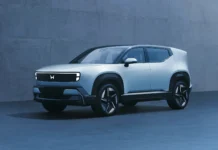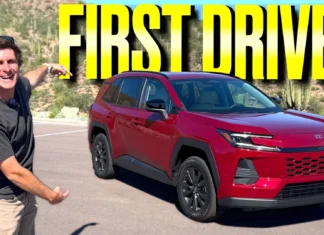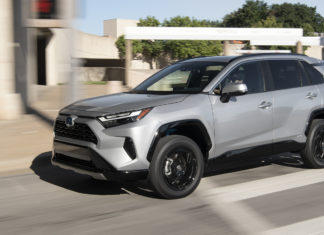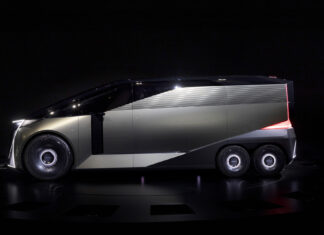
In this video, Tommy brings out the all-new 2024 Hyundai Tucson XRT to the ranch to determine if this Korean crossover truly deserves to be marketed as the ‘off-road’ version of the Tucson. There he subjects the Hyundai to the TFL Slip Test and The Trenches section of the onX Offroad Course at Tumbleweed Ranch.
Tucson XRT Spec’s and First Impressions
The Tucson XRT builds off the basic platform and powertrain of the more pedestrian Tucson. Power comes from the same 2.5-liter four-cylinder GDI engine good for 187-hp and 178 lb-ft. of torque. The engine’s mated to an 8-speed automatic transmission and Hyundai’s HTRAC AWD system. Estimated EPA mileage rates the car at 25 city/32 hwy/28 combined mpg.
From there, Hyundai adds plastic flared fenders, side steps, and a plastic front fascia and skid plate under the engine. And price? The XRT starts at $33,725 with front-wheel-drive. The price as tested with AWD, adaptive cruise control, 10.25-inch touchscreen, 19-inch wheels, and heated seats among other options, just over $37,000.
The interior comes nicely equipped and feature rich. The seats are nicely bolstered and put together. The touchscreen is functional, although the complete absence of dials or buttons takes some getting used to. Heated and ventilated front seats, wireless phone charger, and a clear, and bright digital dash display round out a comfortable cockpit. Rear seat room is excellent for six-foot-tall people, and the 38.7 cubic feet of cargo space behind the second-row seats looks enormous. What’s missing? Wireless CarPlay/Android Auto and a full-size spare tire.

TFL Slip Test Results
Test #1 – The TFL Slip Test starts with the Tucson’s front wheels on rollers. This tests how the AWD system distributes power from a front-wheel power bias to the rear wheels. As the video shows, the Tucson had no issues. The HTRAC system does a solid job moving power to the rears. Tommy did the test again with the rear wheels in rollers and again found no issues.
Test #2 – The next progression in the TFL Slip Test puts a rear wheel and its opposite front wheel in rollers. The Hyundai’s traction-control system took awhile to allocate power from the spinning wheels to the grounded ones. But it did the job. Interestingly, Tommy did the test again but now with the center-lock activated. The center-lock splits power between the front and rear wheels evenly. The slip test found no obvious difference in performance.
Test #3 – This time both rear tires and the left front are on rollers, the right front tire’s on the ground. The Tucson took a second or two to figure out what was going on before shunting power to the grounded wheel, but it did pull the car off the rollers. Again, Tommy tried it with the center-lock activated and saw no dramatic improvement in the results.
Test #4 – For the last slip test, both front wheels are on rollers as well as the left rear wheel. After applying plenty of throttle, the HTRAC system pushed enough torque to the grounded wheel to set the Tucson free. There was no big difference when replicating the result with the center-lock engaged, either.

The Trenches
Despite the measly 8-inches of ground clearance and all-season OEM tires, the Tucson XRT made it through the articulation onslaught of The Trenches at the onX Offroad Course. The vehicle’s AWD system struggled though, but it did succeed, impressing both Tommy and Blaze, the Bernese mountain dog.
TFL’s Take
Hyundai may market the XRT as their off-road Tucson, but it’s not. While the AWD system turned out to be more capable than we thought it might be, the features Hyundai put on this model left us scratching our heads. The XRT spec’s bigger 19-inch wheels instead of the 17-inch wheels standard on the SE or SEL trims. Bigger wheels mean narrower sidewalls on your tires, which makes for a stiffer ride off-road and prevents owners from running more aggressive AT-type tires on the XRT.
A check underneath the Tucson shows a plastic – not metal – skid plate underneath the engine, a low-hanging exhaust pipe, and no recovery hooks for pulling the Tucson out of a ditch or mud pit or deep snow. In short, the Tucson XRT with HTRAC AWD is a decent, spacious crossover. But it’s no off-roader.
To see Tommy’s full test, click on the video below:























